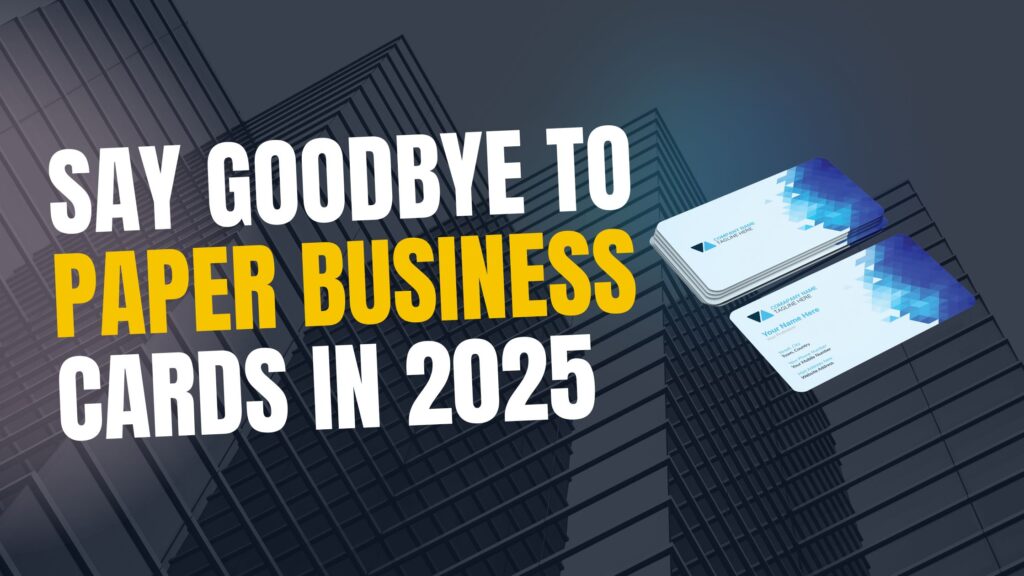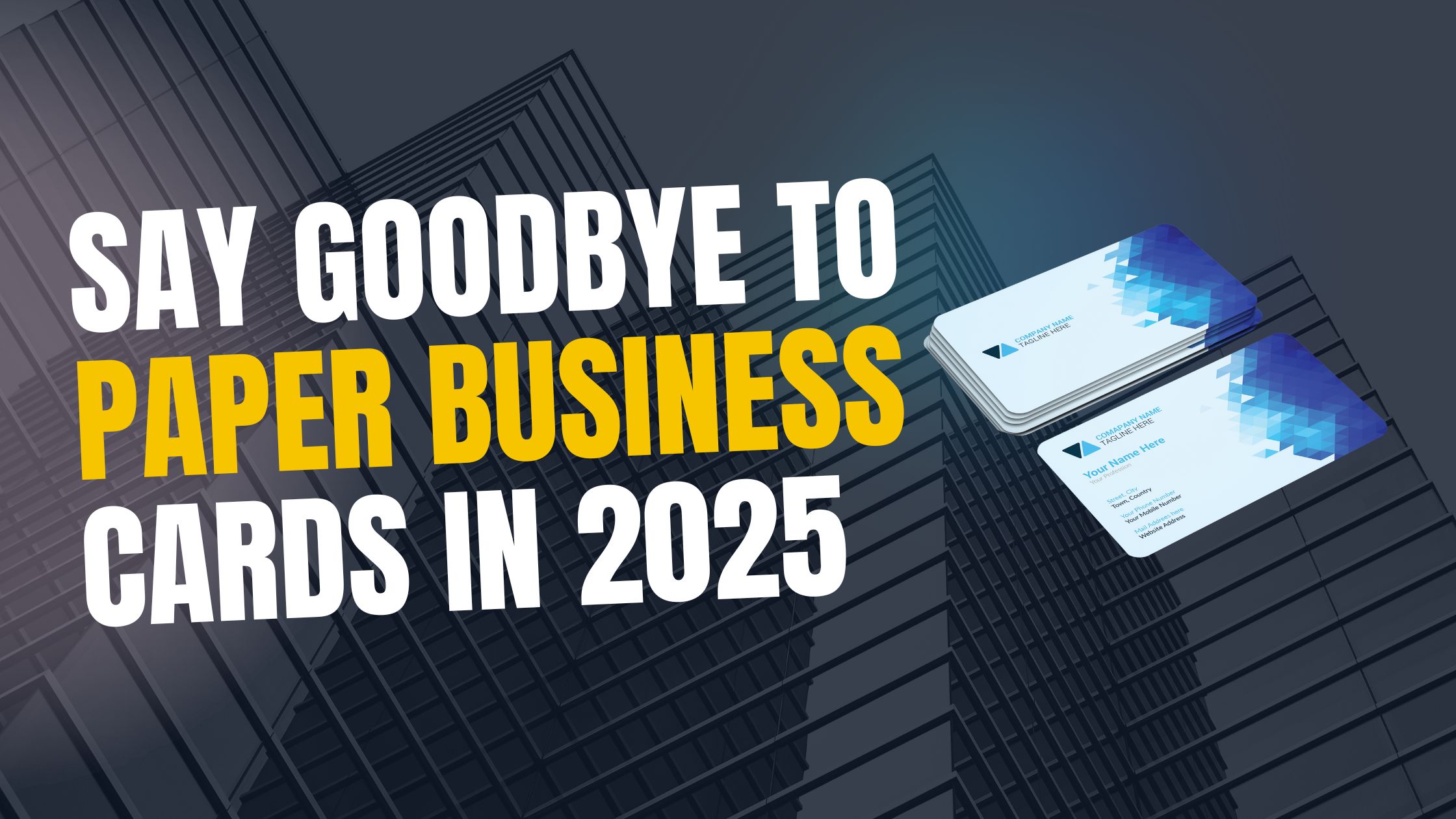2025: The Business Card Exchange Goes Digital
The traditional business card exchange is becoming a thing of the past. Your old paper cards simply can’t keep up with the times. For years, professionals have relied on paper business cards to share contact information. While they were once efficient, in today’s digital world, they’re no longer the smartest choice. Here’s why the tradition of trading business cards is evolving — and how it’s changing the way professionals connect.
The Decline of Paper Business Cards
For decades, business cards have been essential tools for professionals to exchange contact information. However, with the widespread use of smartphones and the growing emphasis on sustainability, paper cards are being used less frequently. They’re easy to lose or forget, and the stigma around digital alternatives has disappeared.
Digital business cards are not only more convenient but also far more eco-friendly. They eliminate waste and drastically reduce the environmental footprint compared to printing traditional paper cards. As individuals and businesses become increasingly eco-conscious, digital cards are emerging as the cleaner, greener choice.
Digital Business Cards: The Modern Solution
The major shift in 2025 is the rise of digital business cards. These virtual cards are fully editable, easy to share, and completely paper-free. Unlike static paper cards, digital cards are dynamic — they can include contact details, social media links, portfolios, and even video introductions. This allows professionals to showcase more than just basic information.
Another key advantage is flexibility. Digital cards can be updated instantly, ensuring your contact details are always accurate and up to date.
Cost and Sustainability Benefits
Cost and sustainability are two of the biggest factors driving the rise of digital business cards. Printing traditional cards requires paper, ink, and energy — all of which have environmental and financial costs.
Digital cards, on the other hand, require no printing or shipping, making them a much greener and more cost-effective alternative. They’re especially beneficial for startups and small businesses that want to save money without sacrificing professionalism.
Sharing a digital card takes just a tap or a scan — faster, easier, and smarter.
Networking in the Digital Age
In today’s world of smartphones and social media, networking no longer needs to happen only in person. Digital business cards fit perfectly into this new way of connecting. Professionals can instantly share their information via a quick scan, message, or link.
New technologies like QR codes and augmented reality (AR) are enhancing this experience even further. For example, scanning a QR code on a digital card could open an interactive profile or short video introduction, creating a more engaging and personal connection.
The Future of Business Cards
By 2025, virtual business cards are becoming the new standard. They’re replacing paper cards with a sustainable, flexible, and modern solution that keeps networking simple and efficient.
Digital business cards save time, reduce waste, and align with the eco-friendly values of today’s professionals. As technology continues to evolve, digital cards will define how professionals connect — seamlessly, instantly, and intelligently.




